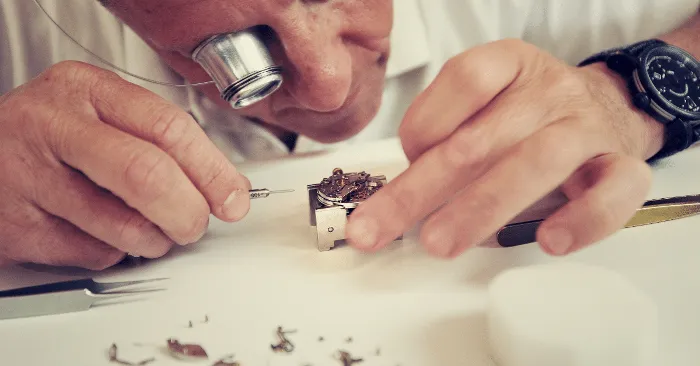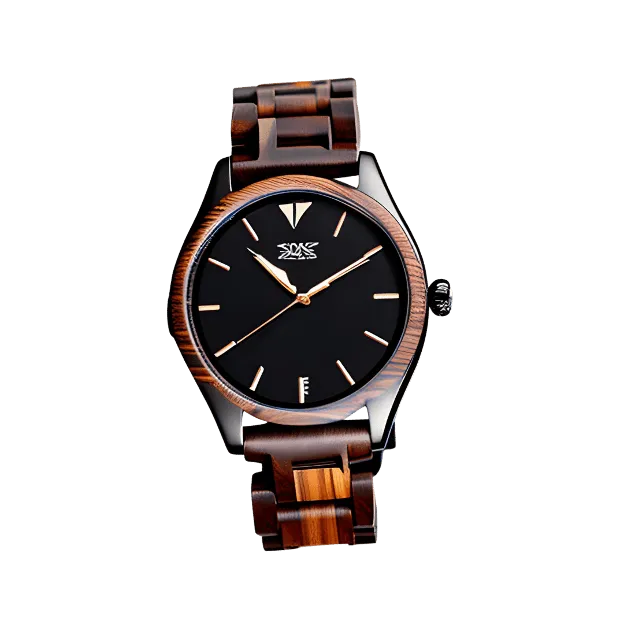Types of Watch Materials You Should Know

-
An Overview of Types of Watch Materials
-
Types of Watch Materials
-
Gold
- White Gold:
- Yellow Gold:
- Rose Gold:
-
Titanium
-
Ceramic
-
Stainless Steel
-
Wood
-
Plastic
While watches have developed, so has the material they are composed of. Many materials are now used to make timepieces, and each has its own set of advantages. Learn about the various types of watch material as well as which ones you should look for when you go watch shopping.
An Overview of Types of Watch Materials
Timepieces may be made from a number of materials. With Stainless Steel watches, you can be certain that they are of fine quality. The finest watches are made of titanium or ceramic, however such watches are also more costly. It is more resistant to moisture and sweat than 'regular' steel. An essential part of preserving a watch's color is the application of PVD coatings. A watch without a coating may fade in a year if it's often worn.
Even if you don't realize it matters, the material used to make the watch has a significant impact on both its looks and its expected lifespan. Watch users today desire long-lasting timepieces that may survive for years rather than months or even just a couple years.
Types of Watch Materials
Most people glance at the parts of a watch first when they go watch buying. Despite the fact that some may think it isn't that important, it really plays an important function. In today's world, watches are made from a wide variety of materials. They all have different looks, different benefits and drawbacks, and a wide range of prices to match.
Gold
The term alone conjures images of opulence. A valuable metal, gold may be found in either pure or mixed form. High-end watches and jewelry often include 75 percent gold (18 Karat gold). Gold is available in a variety of forms, each with a unique composition. They might be white, yellow, or even rose-colored.
White Gold:
Silver or palladium are common alloying elements in white gold. High-end, luxury, and even ancestral dress timepieces use this material.
Yellow Gold:
24-carat yellow gold alloyed with silver and platinum is the purest form of 24 carat gold.
Rose Gold:
In order to get the color of rose gold, 24 karat yellow gold is alloyed with different percentages of copper. The rich and unusual coloration of this material appeals too many, it's the perfect material for fancy sports watches and sophisticated evening watches.
Titanium
There are additional materials used in alloying titanium. In terms of weight and durability, it's twice as robust as stainless steel, making it ideal for premium watches. Titanium is resistant to corrosion and hypoallergenic, making it great for those who suffer from metal sensitivity. In contrast to a stainless steel watches, this one has a silvery finish that detracts from its otherwise impressive appearance. Using them on a daily basis isn't a problem, and they can survive most standard conditions. Remember that this metal is tough to deal with, therefore it may cost a lot of money to repair your timepiece if it breaks.
Ceramic
Ceramic watches provide a lot of advantages over metal ones, such as heat resistance and scratch resistance. With its long-lasting sheen, this material is a popular option for luxury timepieces. It's also non-porous, simple to clean, and a lot lighter than most other materials. Ceramic is not as impact-resistant as steel, thus it must be handled with extreme caution, since it will shatter and leave you with a large repair price. The price of a ceramic watch is high since it is one-of-a-kind and must be produced to order.
Stainless Steel
The most common metal used throughout luxury watches is stainless steel. This is in part due to its intrinsic properties, which make it ideal for usage in timepieces. A few of its advantages include its sturdiness, resistance to corrosion, and overall lightness, among others. Furthermore, because of its widespread availability, it is lower in raw material cost that results in cheaper watches in the catalog. When compared to silver and gold, stainless steel watches are the least costly option.
Wood
Every timepiece created from wood is one-of-a-kind due to the variety of colors and grain patterns available in this natural material. Watchmakers may show off their skills by producing stunning patterns on this material. Additionally, wood is an environmentally beneficial material that is typically acquired ethically, so it does not hurt the natural world. Wood is a long-lasting, low-maintenance material that takes on a rich patina with age. If it becomes scuffed or dented, it may be simply fixed. The wooden watch is an excellent choice if you're looking for a unique accessory that most people have never seen before.
Plastic
It may not be the ideal material for a watch. However, sometimes you get the most stylish timepiece out of it because of its bright look. It's a decent pick for its low weight and durability although it is easier to get damaged. The case might crack and break if there is a large amount of force put to it. Unlike other materials, it doesn't have the same lustrous sheen.
If you find this article helpful, you might want to check out my other posts :
>> Top 3 Commonly Used Materials for Watch Glasses
>> Methods of Selecting Watch Sizes
To learn more about watches :
>> Welcome to Our Learning Hub
To see my recommendations of watches, cases, and watch straps :
>> Explore Watches and More with TimeFAQ!
To see my reviews of watches :
-
An Overview of Types of Watch Materials
-
Types of Watch Materials
-
Gold
- White Gold:
- Yellow Gold:
- Rose Gold:
-
Titanium
-
Ceramic
-
Stainless Steel
-
Wood
-
Plastic






